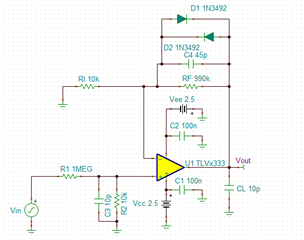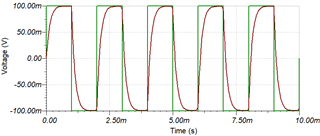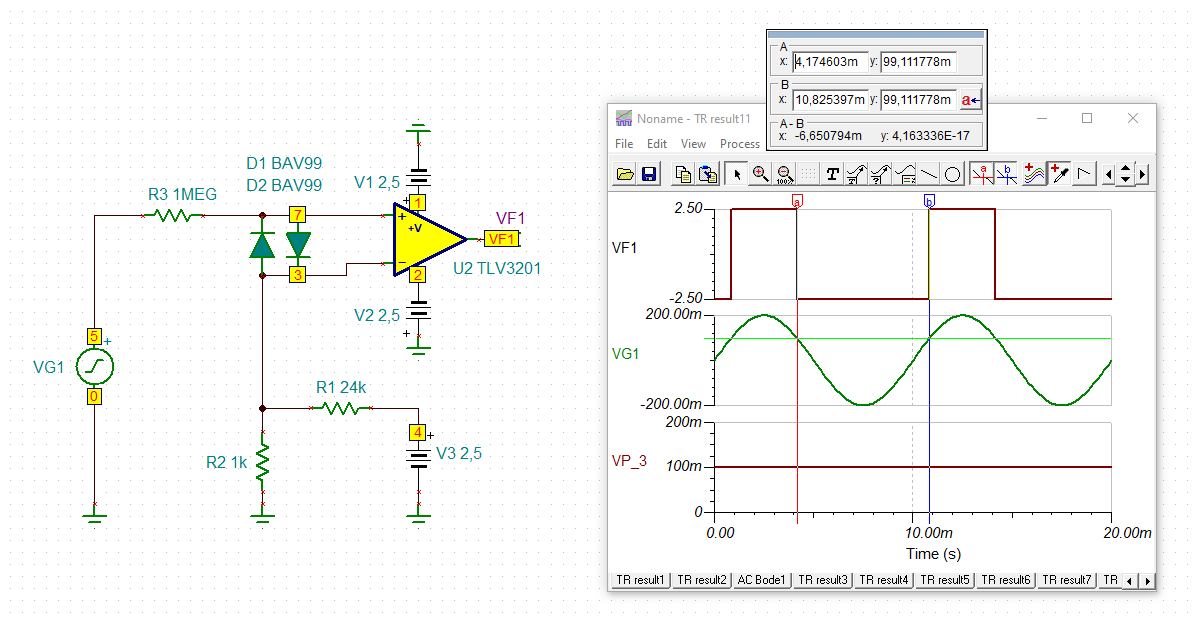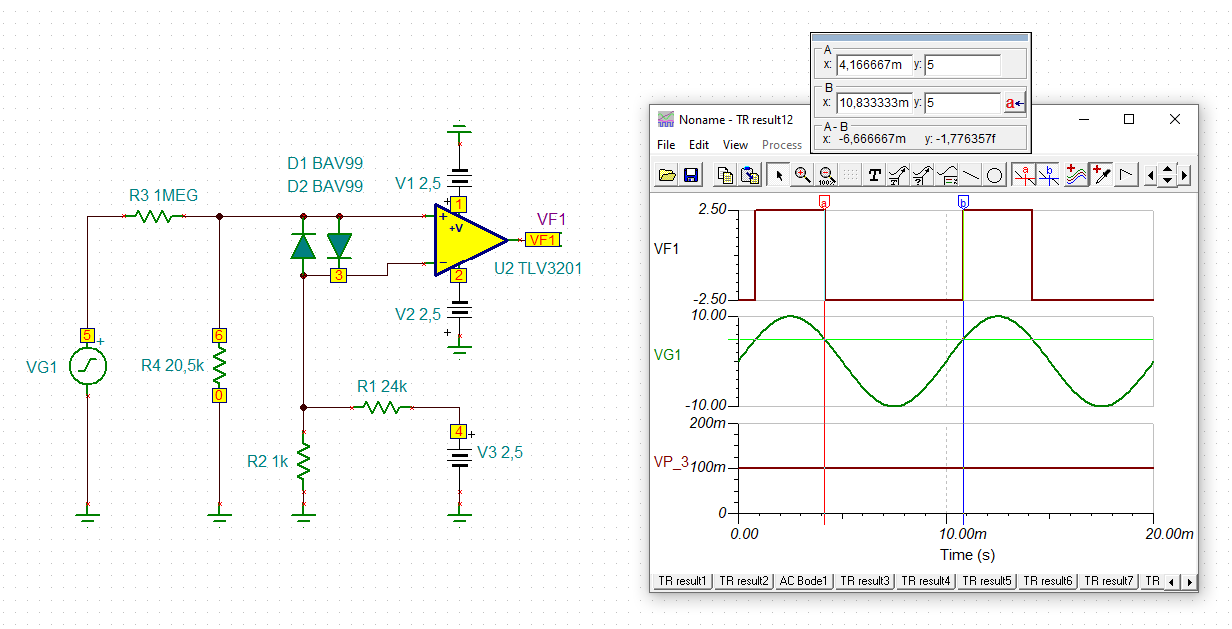Other Parts Discussed in Thread: TLV3202
Hi,
I am using the TLV333 in my circuit, please see picture:
The EM_Terminal_N signal can change from -150V to +150V
I need to detect when this signal is above 0.1V or below -0.1V
From this circuit you can see that at 150V the OpAmp V+ terminal is 1.48V (ok for the OpAmp)
if the signal is 0.1V the output of the OpAmp is 1mV. After this OpAmp i use one more TLV333 OpAmp with gain of 100 (see picture below) to amplify the 1mV back to 0.1V, than it enters to comparators that detects the 0.1V:
My questions are:
1. Is it ok that the output of the first OpAmp will be 1mV and than i amplify it to 0.1V? the ripple and noise on the 1mV will be much lower from 1mV?
2. If I use just 1 OpAmp with GAIN of 1 instead of 2 opamps, than it will be ok for the OpAmp at +-150V because the resistor at V+ is 1Meg and the current to V+ is small? this is ok with the stress? The supply of the Opamps are LDOs, the current can flow back to the LDO from the +150V through the OpAmp?
Thank you





